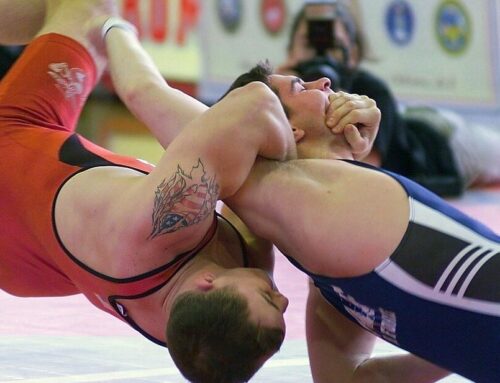
Summary- Read on to find out: What is the scientific definition of fatigue? What 3 things do I need to do to improve my fight fitness? How can I start increasing my fitness today?
Most of us who train have felt it at some point – your mouth is open, gasping for air, your arms are like lead weights, you can’t move your legs, your chest is heaving and you can feel your heart straining in pain. You’re gassing out, winded, exhausted, out of breath, tired, and ready to be picked off.
Whilst this can happen to absolutely anyone, it should not be happening to you frequently in training, or worse, competition. If you find you are gassing out and can’t finish a 2, 3 or 5-minute round strong and can’t recover in 1 minute ready to go again, you need to change up your conditioning and improve your cardio fitness.
What makes me gas out and get tired?
Broadly speaking, there are 2 causes of fatigue that prevent you from maintaining your work rate at a consistent level (in other words, striking and/or grappling). These are central fatigue and peripheral fatigue.
Central Fatigue
What scientists mean when they say central fatigue is that your central nervous system is putting on the brakes. The central nervous system refers to the brain and spinal cord, and the nerves they use to communicate with the rest of you. This system is complex, but the simplest way to understand it is that the central nervous system monitors the state of your body as you exercise (or fight) and it controls several things that influence your ability to continue, such as motivation, energy supply, pain tolerance and perception of effort (how hard something feels). It works both ways, increasing your arousal in anticipation of a hard session, and reducing it when you feel tried.
You will know this from those sparring sessions where you feel pumped up beforehand, because you know what is coming, and you are almost immune to the impact of leg kicks and body shots. As you tire, central fatigue reduces the strength of your muscle contractions, reduces your motivation to continue and increases the perception of effort in the task.
This type of fatigue is most notable in activities that last longer, such as endurance events, championship rounds or the second half of a training class.
Peripheral Fatigue
The word peripheral means “around the outside” or in the case of your body, fatigue that is local to the working muscles and not coming direct from the brain or spinal cord. This type of fatigue is caused by more extreme, intense exercise and the resulting waste products that build up in your muscles as your body struggles to keep supplying energy to them.
As the intensity builds up, chemicals are released inside your muscles which prevent the fibres from contracting (producing force) and stop the muscle from renewing its own energy source. At the same time, your heart is beating as fast as it can, pumping out as much oxygenated blood as it can, with no more headroom to increase the supply of fresh blood. As your heart is also a muscle, it too will tire when working at its maximum rate and will begin to weaken the strength of the pumping action. On top of all this, if you are tense and stiff, as many people will be when they sense they are fading, this tension will sap even more energy and prevent the free flow of blood and nutrients in and out of your muscles.
Think of being pinned against the cage defending a takedown, with the opponents’ shoulder pressed into your belly, you can’t take in enough air to replenish what you are using with all your tense muscles, and your ability to explode out of the position is reducing every second.
How do I stop gassing out and become fitter?
To prevent fatigue from setting in, you must do 3 things:
1: Increase your aerobic fitness by developing your heart and lungs with the right type of training
2: Raise your anaerobic threshold so that you can work harder BEFORE you need to slow down – in other words, you have to be able to produce more energy aerobically
3: Increase the economy of your movements through strength training and technique refinement
The first step is the simplest and it is the basis for the “old school” reliance on roadwork or steady running popularised by the Rocky movies and countless other examples. The good news is, you don’t have to run through the streets of Philadelphia at 5am to get the benefits, but you DO have to perform between 30-60 minutes of continuous, full body aerobic activity at a pace you can maintain without slowing down ideally 3 times per week.
Here are 3 different aerobic fitness sessions you can start using today:
Session 1: Treadmill 5 minutes, Rower 5 minutes, Skipping 5 minutes, repeat x3 (45 mins total, stay at RPE 6-7 throughout, or a pace where you could talk if you had to)
Session 2: Shadow box 3 mins, Low kicks on bag 3 mins, Skipping 3 mins, Punches on Bag 3 mins, Knees and Elbows on bag 3 mins repeat x3 (45 min total, leave 3-5 seconds between all combinations/strikes and stay at RPE 6/7, do NOT get out of breath but practice staying relaxed)
Session 3: Every minute on the minute for 15 minutes: 5 press ups, 5 squats, 5 sit ups. Followed by: Every minute on the minute for 15 minutes: (light) sandbag clean to shoulder and squat 3 each side. Followed by: Every minute on the minute for 15 minutes: Deadlift 5 reps (50% 1rm) Box jump 5 reps, sprawl 5 reps. (45 mins total, stay loose and keep it to RPE 6-7).
Want to develop world class conditioning by learning about the other two methods mentioned in this article or build a personalised fight camp training plane? Contact us here: info@edbakerperformance.com
About the author : Edward Baker

Edward Baker is a University Lecturer, Researcher and Strength and Conditioning Coach with over 15 years’ experience working in elite sport.



